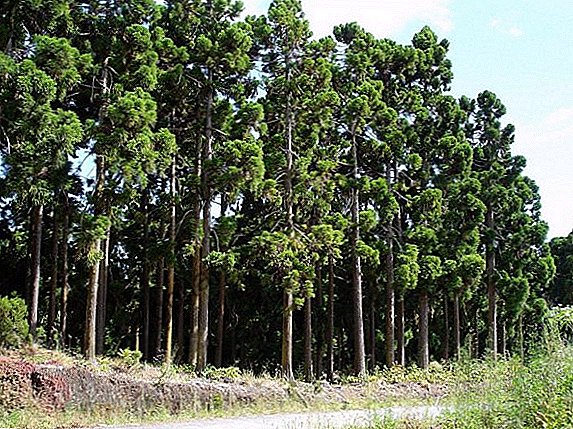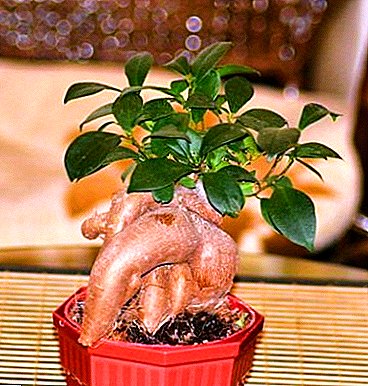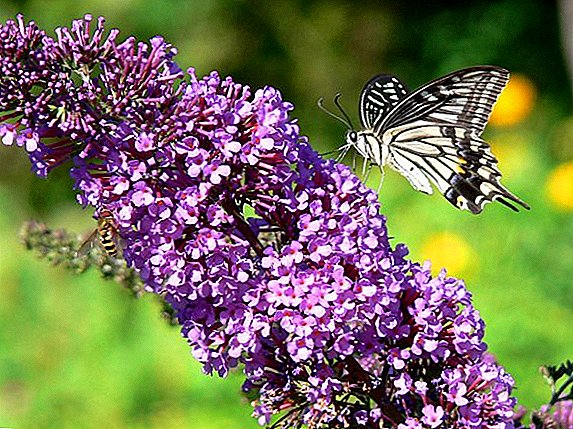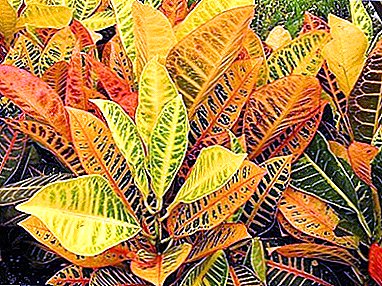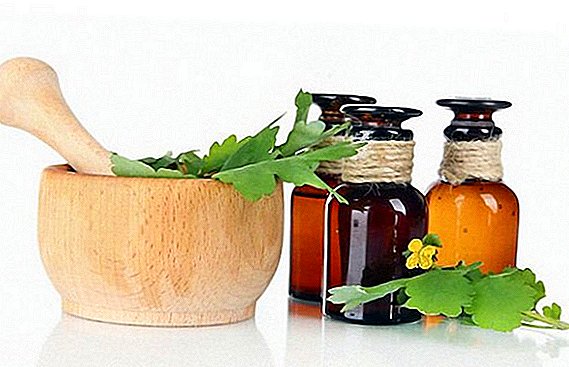 Pepper, like other crops, is prone to disease, it is also attacked by pests that can not only reduce the crop, but also completely destroy it. Many diseases are carried by insects or weeds, so combating them is a considerable contribution to a good harvest. Disease activity may depend on specific phases of pepper development. The good news is that there are proven ways to deal with them. In this article we will consider how to classify the attack in time and take adequate measures.
Pepper, like other crops, is prone to disease, it is also attacked by pests that can not only reduce the crop, but also completely destroy it. Many diseases are carried by insects or weeds, so combating them is a considerable contribution to a good harvest. Disease activity may depend on specific phases of pepper development. The good news is that there are proven ways to deal with them. In this article we will consider how to classify the attack in time and take adequate measures.
Diseases
Pepper is subject to fungal, bacterial and viral diseases. There are also insect pests that can cause considerable damage to plants. Consider each type of disease in detail.
Learn about the application of green, bitter, black, red, green Bulgarian, cayenne pepper, chili.
Fungal diseases
The source of this type of disease are microorganisms, fungi, provoking damage to plants by their vital functions. Here is a list of them:
- Blackleg - infects the lower part of the stem with a fungus, with the course of the disease the stem turns black and dries out, then the plant dies. The cause of the appearance may be excessive moisture, a sudden change in temperature, or an excessively tight fit. Therefore, in order to eliminate this attack, it is enough to stabilize the temperature regime, the frequency of irrigation and thin out the rows. It is recommended to treat the drug "Barrier" (proportions: 3 caps per 1 liter of water).
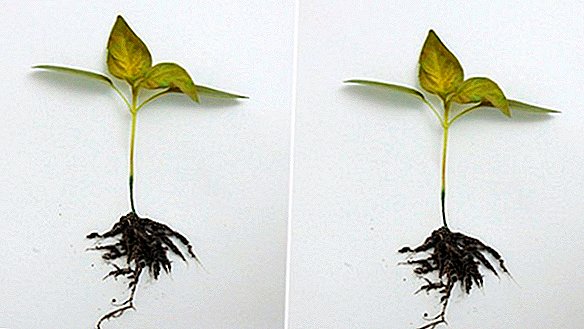
- Fusarium - characteristic signs are leaves of bright yellow color, and also prompt wilting. Causes of infection - excessive moisture and temperature fluctuations. Diseased plants cannot be saved, therefore it is recommended to remove them, and process the soil under them with a 1% solution of potassium permanganate. For the surviving plants should reduce the amount of watering to 1 time per week, as well as stabilize the temperature. For prophylaxis, it is necessary to treat the plants with drugs used in blight.
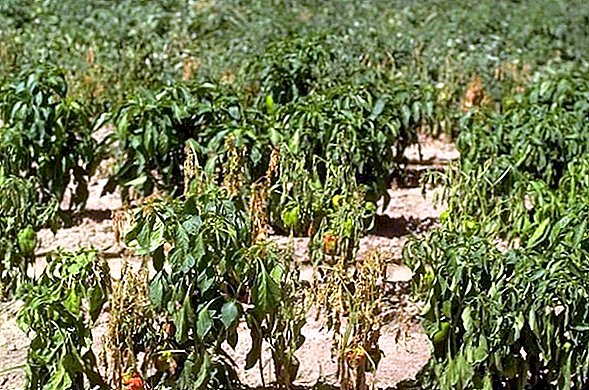
- Late blight - a characteristic symptom is the appearance of individual brown spots on the leaves and stem. The occurrence of this disease contributes to excessive moisture. To get rid of late blight, it is recommended to dry the soil and reduce the frequency of watering. For processing use drugs "oxyhom" and "Barrier".
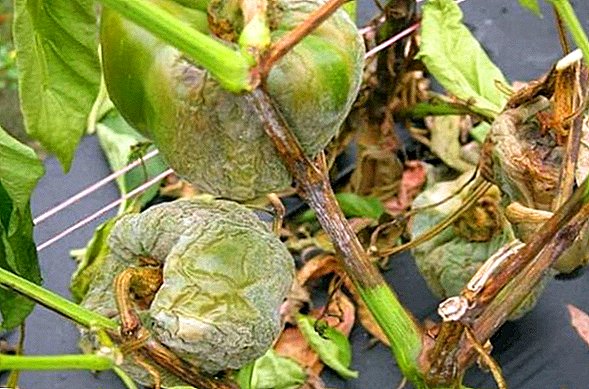
Learn the differences between the peppers of the Ratunda varieties, Soloist, Golden Miracle, Swallow, Kapsikum, Atlas, Kakadu, Cow's Ear, Orange Miracle, Habanero, Gemini F1, Antey, Belozerka, Anastasia, California Miracle, Claudio F1, Gypsy F1, Bogatyr.
- Gray rot - A distinctive feature is the formation of gray bloom on the root zone. Excess moisture also contributes to its appearance. To prevent disease, it is worth drying the soil and removing the infected parts. After that it is necessary to process pepper with such preparations as "Fundazol", "Previkur".

- Brown spotting (cladosporiosis) - a typical symptom is the appearance on the outside of the leaves of brown spots and gray deposits on the inside. If untreated, the leaves die off and the whole plant dies. When these signs are found, it is worth treating the peppers with the fungicides Barrier and Barrier.

- Pepper anthracnose - one of the most dangerous fungal diseases due to the possibility of damage to them at all stages of plant development. It affects both the leaves and the fruit. A characteristic feature is the appearance of round necrotic spots on fruits and leaves (the color of spots is from sandy to dark brown). For treatment, treatment with a solution of Bordeaux mixture or copper oxychloride is used.
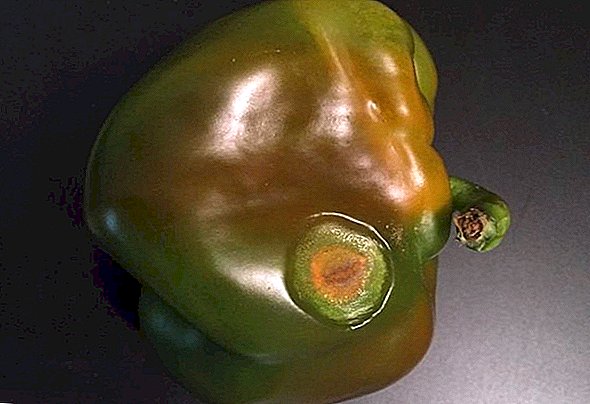
Important! All fungal diseases are provoked by an excess of moisture, so it is necessary to observe the irrigation regime.
Bacterial diseases
For this type of disease is characterized by the presence of putrid areas, spotting on leaves from grayish-white to black. The development of the disease contributes to excessive moisture and low temperature. Here is a list of the most common diseases:
- Wet Fruit Rot - develops on the fruit from the side of the cup. Initially, a small spot appears, which subsequently extends to the entire fetus. A fetus infected with bacteria turns into a slippery watery mass with skin dried from above. When the skin breaks, a white frothy mass is released. Infection occurs through water, seedlings or soil. The bacterium winters in the ground, so one of the preventive measures is deep plowing and respect for crop rotation. It is recommended to spray the solution of blue vitriol.
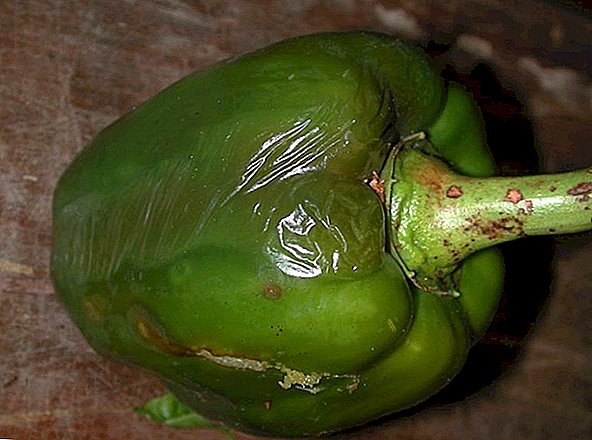
- Bacterial cancer - appears first with white raised areas on the leaves and stem, which later transform into brown ulcers with a white edging. Systematic infection provokes the process of wilting and death of the plant as a result. The disease is transmitted through the soil, infected seeds and plant remains. It is recommended to remove plants when symptoms are found, the rest should be treated with copper sulfate. To avoid re-infection in the next season is to observe crop rotation. The next planting of pepper - no earlier than 3 years.
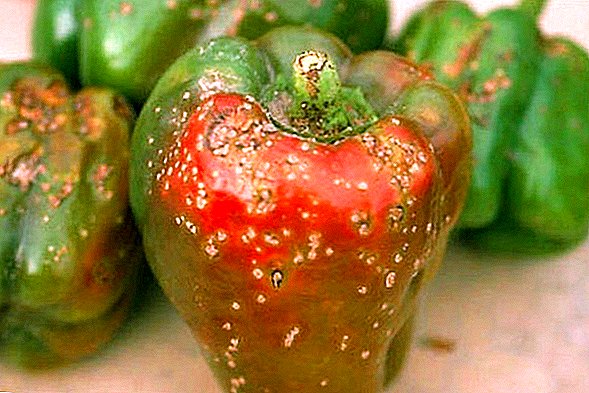
Important! Bacterial cancer is transmitted through seeds. It is recommended to treat the seeds before planting. This will help avoid or reduce the number of possible pathogens.
- Verticillus (Wilt) - A bacterial disease that is asymptomatic at the initial stage. With the progressive development of the disease, blanching of the leaves and the acquisition of a corrugated form are observed. The disease causes a gradual withering and cannot be treated, therefore infected plants are removed and burned. To prevent re-infection is to disinfect the soil.

Learn how to process seeds before planting, when to sow pepper, why the leaves of pepper seedlings turn yellow, how to feed seedlings, how to care for pepper in open ground, how to shape pepper bushes, how to prepare pepper for the winter.
Viral diseases
This type of disease is most often transmitted by insects. Characteristically, the leaves are covered with various spots, there is a deviation in development, they become unhealthy, but wilt does not occur. Pepper is characterized by such viral diseases:
- Tobacco mosaic - characterized by the appearance of a mosaic pattern on the leaves of light and dark spots. Gradually, tissue death occurs in the affected areas. Carriers are ants and aphids. If symptoms are found, treat the plantation with Chrysomal. For prophylaxis, seed treatment should be carried out before planting with a disinfectant and crop rotation should be observed

- Stolbur - symptoms are stunting, dwarfism. Young leaves curl and wither. On mature fruits there may be a strong concavity. Carry mites, cicadas, aphid. An effective way to get rid of the disease is the complete destruction of infected plants, the fight against insect vectors. Seeds and seedlings are planted with disinfectants before planting. Gardeners recommend watering the beds with skim milk every 10 days for viral diseases - this helps to reduce the activity of viruses.

- Bronze (spotted wilt) - virus spread by thrips. A characteristic sign is the color of the leaves in a bronze or gray-purple color. To get rid of this ailment, all affected areas should be removed, and the plants treated with Fundazol (remove ripe fruits before treatment).

Did you know? The acuteness of pepper is measured on the Scoville scale. In sweet (Bulgarian) pepper, the level of stinginess ranges from 0 to 100 points. Cayenne pepper shows the result of 30-50 thousand points. The sharpest on this scale is the artificially bred variety Carolina Reaper, which has a burning capacity of 2 million 200 thousand units.
Pests
Not only fungi, viruses and bacteria are dangerous to pepper. There are a number of insects that can cause great damage to the crop:
- Slugs - feed on leaves and fruits. They provoke the process of decay. To combat slugs, they use the drug "Strela", as well as using grooves around bushes that are sprayed with lime mortar. Effectively also helps loosening the land near the bushes with further sprinkling it with dry mustard and ground bitter pepper.
- Aphid - eats juice, causing wilting, ugliness and damage to the crop. Dwells on the leaves, causing them to twist. To combat aphids used insecticides "karbofos", "Keltan". Effective treatment with tincture of ash and liquid soap (10 liters of water, 1 cup of ash and 1 tablespoon of liquid soap).

- Spider mite - also feeds on plant sap. It can be found on the bottom of the sheet. The web on the branches of pepper is a characteristic feature of this tick. Ticks are carriers of many viruses, and such drugs as Fufanon, Karbofos, Phosbecid or Actellic are effective for getting rid of them.

- White fly - an insect that carries a number of fungal diseases. When this insect is detected, it is recommended to wash the plants with clean water, loosen the soil and pour peat or sand. To process the collected fruits with the drug "Commodore" (proportions: 1 g per 10 l of water). The plants themselves after harvest should be destroyed.
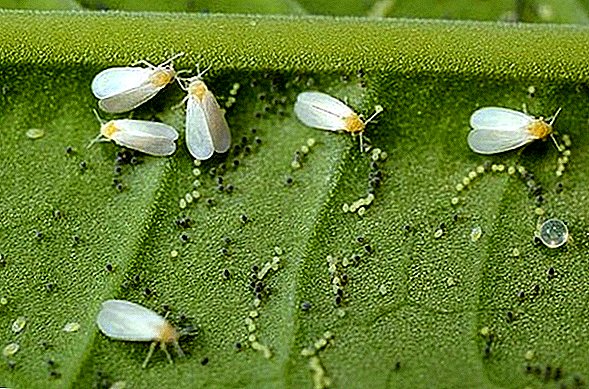
- Wireworm - this is the larva of the click beetle. It has a yellow-brown color and a hard body coating. It feeds on the roots and can cause serious damage to the plantation. In the ground may be up to 5 years. To get rid of this pest produce a deep digging area (the wire will die from low temperatures in winter). It is also possible to lay out baits: pieces of root crops are laid out in the aisle at a distance of 30-35 cm, which are checked after 2-3 days and destroy the wireworms found there.

Did you know? Bulgarian pepper contains the hormone of joy. This hormone is also present in chocolate, but the pepper is less calorie.Diseases and pests of pepper are a considerable amount, and this leads to the fact that gardeners refuse to try to grow this culture on their own. There are general recommendations to reduce the likelihood of crop disease: maintaining crop rotation, buying quality seed, treating seeds before planting, early planting, and clearing weeds. Observing these simple rules, detecting and reacting to pepper diseases in time, you can effortlessly grow this capricious culture yourself.



















